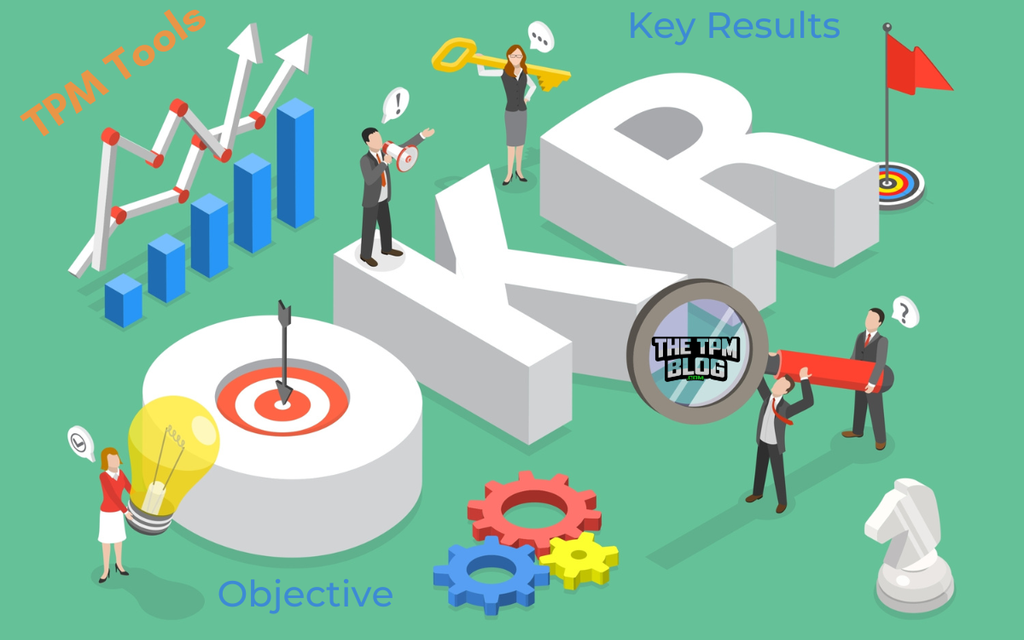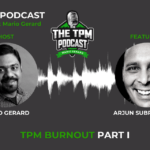Last updated on October 18th, 2024 at 08:17 am
OKRs (Objectives and Key Results) are a powerful tool for leaders to drive focus, alignment, and measurable success across teams and technical programs. Whether you’re a seasoned leader or exploring OKRs for the first time, mastering this framework can help transform how your organization sets and achieves its goals. In this post, we’ll break down the essentials of OKRs and show you how they can become your leadership superpower.
Much of my knowledge comes from the organizations I have worked in, where OKRs were fundamental to a TPM’s strategy for successfully executing goals.
If you are unfamiliar with OKRs, I recommend reading the additional resources list at the end of the post. These books are full of rich stories and insights into how organizations succeed.
OKR Basics
- O in OKR stands for Objective. These are clearly stated ideas that are inspirational, significant, and action-oriented. (The What of OKR)
- K & R in OKR stands for Key Results. These are time-bound and measurable, concrete goals set to be achieved. (The How of OKR)
- An Objective can have two or more Key Results. These Key Results will help you drive and achieve your objective.
OKR Example
Objective: Improve the scalability and performance of the core product to handle 10x traffic growth over the next year.
Key Results:
1. Reduce average API response time from 500ms to 200ms by Q1.
- Upgrade API infrastructure with performance optimizations.
- Implement caching mechanisms to reduce redundant queries.
- Reduce payload sizes and optimize request handling.
2. Increase the system’s capacity to handle 1 million concurrent users by Q2.
- Migrate critical services to a microservices architecture for better scalability.
- Set up autoscaling capabilities in the cloud infrastructure.
- Implement horizontal scaling for high-traffic services.
3. Achieve 99.99% uptime for all core services by Q3.
- Set up monitoring and alerting tools for proactive issue resolution.
- Deploy failover systems in multiple geographic regions to ensure redundancy.
- Conduct disaster recovery simulations and ensure backup systems are reliable.
4. Reduce database query times by 30% by implementing improved indexing and sharding strategies by Q4.
- Perform a comprehensive audit of the current database schema.
- Introduce database indexing and optimize slow-performing queries.
- Implement database sharding for highly accessed datasets.
Core OKR Concepts
Set Top-Down Objectives: Objectives can be set at the Executive level and flow from the top down. As mentioned earlier, objectives are inspirational and are often visionary, given their long-term ideas and goals. For an organization of any size, you must ideally have no more than three objectives. Any more, and the team is likely to lose focus. Leave the details of how your teams will accomplish their objectives to them.
Singular Focus: Remember, the goal is to bring focus and commitment across the organizational hierarchy. This method will also mobilize teamwork from all quarters to solve this one problem and shift everything else to a secondary position. This method gives teams a singular focus. It also enables the organization to work together and ascertain which teams or programs need help when they work through their Key Results.
Staying Flexible: Though the Executives set the objective, the key results of how they achieve the objective(s) are defined and determined by the individual teams. And as you work through them, they can clarify whether the key results framed by the teams are effective. However, this type of change would need to be socialized and agreed on by everyone.
Measure: As you work through your key results, ensure you measure them weekly or at a set cadence. Ensure you understand the inputs you are adopting and the desired north star. When doing this, one thing to remember is if your inputs are causing any adverse reactions to the entire business. E.g., If you are increasing revenue, but your returns are 2x below your normal range, then you have an issue you might want to look into. This is where having counter-metrics or guardrails is equally essential.
Communication: Consistently broadcast your objectives and your progress. Everyone within your team and the larger organization needs to understand what you are doing, why you are doing it, and the impact it will have. A leader should repeatedly communicate the OKRs and their importance with precision and clarity.
A Leader’s Tool To Drive Execution: In today’s world, the speed at which a leader changes the direction of their organization is critical. OKRs can serve as a significant tool in helping steer the ship. OKRs can create Focus, Alignment, and Tracking effectively.
Ability To Set Stretch Goals: Objectives will always be lofty goals. As a leader, while you set stretch OKRs, the leader needs to understand the realities on the ground. Do not stretch your team too fast and too far. As a leader, you must convey the importance of outcomes and the belief that they are achievable.
Single Threaded Leader: Every OKR should have a dedicated owner responsible for driving all the cross-platform and cross-functional teams to achieve their respective key results.
See also: Single Threaded Leader at Amazon
The Differences Between KPIs & OKRs
1. Purpose:
- KPIs measure ongoing business performance and health.
- OKRs set ambitious goals and track progress toward achieving them.
2. Scope:
- KPIs are typically standalone metrics.
- OKRs provide more context and direction, with objectives describing what you want to achieve and key results indicating how you’ll measure progress.
3. Time frame:
- KPIs are often tracked continuously over long periods.
- OKRs usually have shorter cycles, often quarterly.
4. Flexibility:
- KPIs tend to be more static.
- OKRs are meant to be more flexible and can be updated as priorities change.
5. Goal-setting:
- KPIs monitor existing processes and metrics.
- OKRs are more focused on driving change and improvement.
6. Ambition level:
- KPIs often have realistic targets.
- OKRs are designed to be more ambitious and challenging.
7. Usage:
- KPIs are widely used across organizations to measure performance.
- OKRs are often used more selectively for strategic initiatives and goals.
8. Structure:
- KPIs are typically single metrics.
- OKRs consist of an objective with 3-5 measurable key results.
While different, KPIs and OKRs can complement each other. KPIs can inform OKR-setting, and OKRs can be used to improve KPI health. Many organizations use both in tandem to measure performance and drive strategic goals.
TPM Role in Executing An OKR
As a TPM, it is essential to understand how your work contributes to the organizational OKRs. Most, if not all OKRs require cross-functional and cross-team collaboration. This is a TPMs bread and butter, where you can make the most impact.
OKR Prioritization
When you prioritize your team’s work against everything your team is doing, categorize them into buckets below and then prioritize them in the order below.
- Keep The Lights On (KTLO)
- OKRs (No more than 3)
- Featured Work
Common OKR Pitfalls
- Having too many OKRs across the organization
- Conflicting OKRs
- Not communicating the OKRs widely and often
- Not tracking and measuring your OKRs with a set cadence
OKR Benefits
The benefits of OKRs are genuinely transformative for any organization looking to drive focus, accountability, and measurable progress.
- Focus – OKRs help teams and individuals prioritize what truly matters. By setting clear objectives, you can ensure that your team works on the most impactful goals rather than getting bogged down in day-to-day tasks that don’t contribute to the bigger picture.
- Alignment – One of the most potent aspects of OKRs is their ability to align everyone across the organization. Whether you’re in a small team or a large company, OKRs ensure that all efforts are working towards a common goal. This creates cohesion and ensures that resources are used efficiently.
- Measurable Progress – OKRs are not just about setting lofty objectives; they come with concrete, measurable key results. This allows you to track progress and know exactly where your team stands in relation to their goals, ensuring that nothing falls through the cracks.
- Accountability – OKRs assign ownership to specific individuals or teams, fostering a sense of accountability. Everyone knows who is responsible for each objective, and this clarity motivates individuals to take ownership of their role in achieving the overall goal.
- Flexibility – While OKRs provide structure, they are also flexible. Teams can adjust their strategies and key results based on progress or changing circumstances, allowing them to stay agile while working toward long-term goals.
- Motivation – By setting clear and ambitious objectives, OKRs inspire teams to stretch beyond their comfort zones. When teams have clear goals and can see how their work contributes to the bigger picture, it boosts morale and motivates them to push for greater achievements.
- Transparency – OKRs promote regular communication and transparency. By consistently tracking and reporting progress, everyone stays informed, and there are no surprises. This open communication fosters trust and keeps everyone aligned with the organization’s objectives.
- Better Decision-Making – With OKRs, decisions are made with clear objectives. This structured approach ensures that every decision aligns with the overall business goals, reducing ambiguity and making it easier to allocate resources effectively.
OKRs bring a multitude of benefits to organizations, from enhanced focus and accountability to better alignment and motivation. By adopting OKRs, you can ensure that your team is not just busy but productive—working towards meaningful, measurable results that drive your organization forward.
Recommended Reading List – OKR Basics
- Measure What Matters by John Doerr is one of the most influential books on OKRs. John Doerr shares insights from his work with companies like Google and Intel on how OKRs can drive innovation and success.
- Working Backwards: Insights, Stories, & Secrets from Inside Amazon by Colin Bryar and Bill Carr reveals Amazon’s unique management principles and practices, including customer-focused innovation, single-threaded leadership, and input metric focus, implemented across key product launches.
- Radical Focus: Achieving Your Most Important Goals with Objectives and Key Results” by Christina Wodtke offers a practical guide to implementing OKRs with real-world examples and case studies.
Additional Resources:
I hope you’ve enjoyed reading this post. If you have more to add, please comment below 🙂
Ready to level up your TPM Career?
Unlock your potential as a TPM—master the fundamentals, navigate career levels, and excel in your role.

















